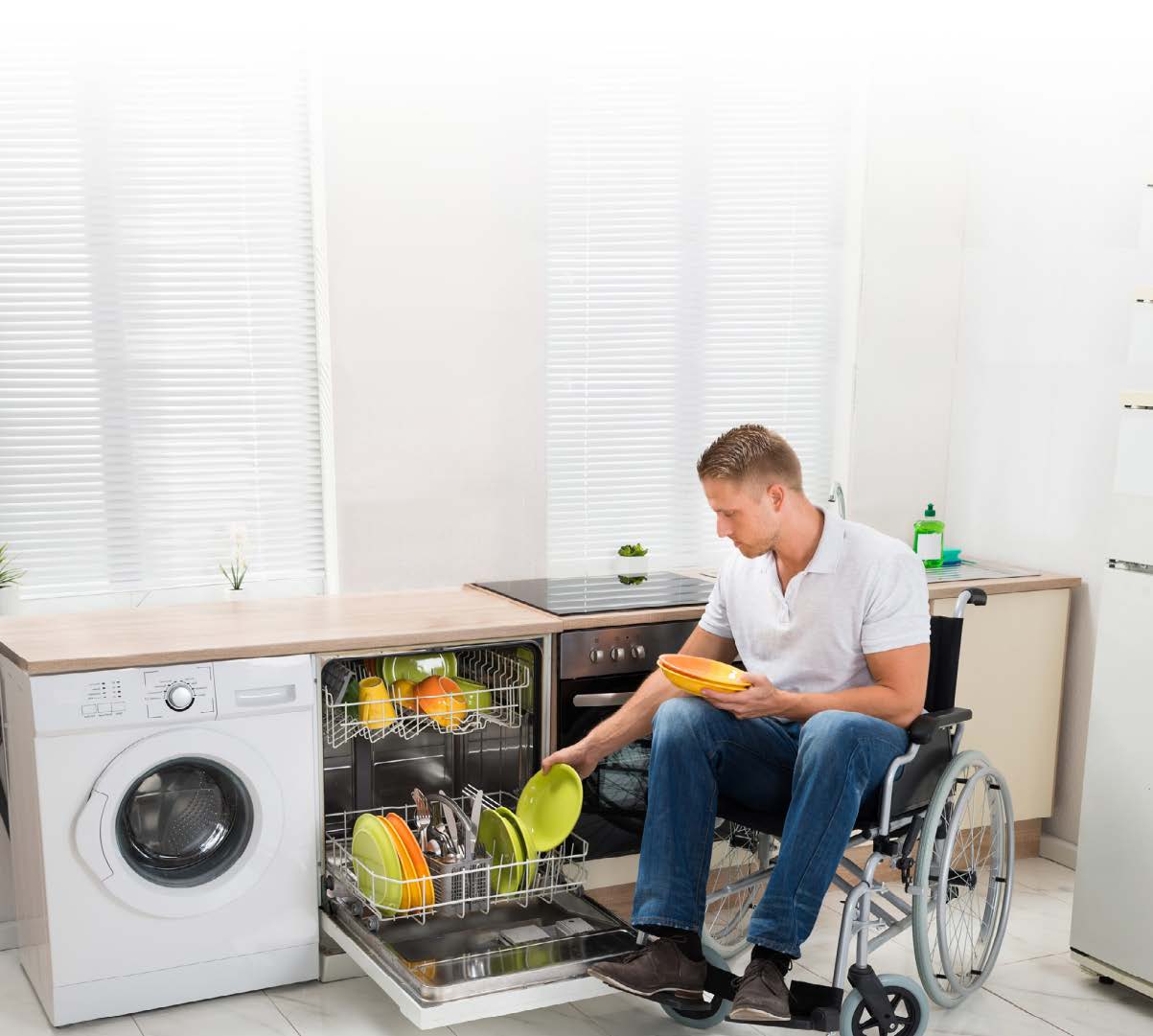HOME MODIFICATIONS
Children and people with disabilities may need modifications to their family home. Beyond the usual ramps and lifts, there are other considerations for home modification.
BY LAUREN AGORATUS, M.A.

ACCESSIBILITY
Physical access is essential for caring for children with special health care needs at home. Even if a child doesn't use a wheelchair, some children may have motor skills issues that make it difficult for them to get around at home. Other children may come home weakened from multiple hospitalizations and can't do what they used to do. Accessibility using universal design may benefit both the child and family. For example, a child who can't get into a tub for whatever reason could benefit from a walk-in shower. Adjustable showerheads, non-skid tub floors, and grab bars can make bathing easier. Shower chairs can help with personal care and some showers now come with built-in benches.
HEALTH
Medically-fragile children could benefit from items that reduce the risk of infection. For example, a whole house humidifier could help in the winter months. There are also whole house air filters, which provide the home with hospital quality air. Many children with disabilities have medical equipment on which they rely. Other children may have to be in climate-controlled conditions. Some children have special medications that need to be refrigerated. Stand-by or whole house generators will provide electricity for medical equipment, heat/air conditioning, and refrigeration in the event of a power outage. Please note that some utility companies prioritize power restoration if the family makes them aware of their circumstances, i.e., having a child or family member that is critically reliant on electrical power, prior to power being out.
SAFETY
Some children with developmental disabilities, such as autism, may wander away from the home. Special window/door locks, alarms, and tracking devices may help prevent this. Families may want to consider a fenced-in yard.
Other children may be on restricted diets, or suffer from Prader-Willi Syndrome, and constantly seek food, while others may have pica and eat unsafe nonedible items. There are cabinet, stove, and refrigerator locks for this purpose.
Children with special needs with poor muscle tone may be at risk of falls. Checking the home for fall hazards is essential in this case. Bare floors or wall-to-wall carpeting are better than area rugs. Homes on one level are safer than those with stairs, which could be blocked off with baby gates if needed, or basement doors locked. There are now even kitchen draws and cabinets that cannot be slammed which self-close and have a rubber stopper preventing injuries. There are portable bed rails for children who fall out of bed. Parents can use baby monitors for children who have seizures. It is beyond the scope of this article, but families should have emergency preparedness plans in place for their children with disabilities.
WHERE WILL MY CHILD LIVE IN THE FUTURE?
With supportive housing, many children with disabilities can live independently as adults. Families of children who may need lifelong care may want to consider home modification for their child to have a roommate or live-in aide. Some families have used an extra bedroom or even added a room to their home for this reason. Others have pooled funds with other families to create a group living situation. For young adults with disabilities remaining at home, families should consider privacy needs and solutions such as intercoms, if needed.
AGING IN PLACE FOR BOTH THE CHILD AND FAMILY
Some types of disabilities have similarities with aging or even result in earlier aging, such as dementia. Home modification can help both the child and parents remain in their home as they age. Accessibility features, falls prevention, and other safety devices such as personal emergency response systems (PERS) can allow people with disabilities and their families to remain in their homes and communities. PERS now have fall detection, are waterproof for bathing, and the individual doesn't even have to make a call as it is automatic.
There are many considerations for home modifications beyond the typical accessibility features. By thinking beyond the usual items that come to mind for people with disabilities, children with special needs and their families can benefit from modifications that improve their health, safety, and future living needs.
MAKING A HOUSE A HOME : ACCESSIBILITY RESOURCE
CENTER FOR INCLUSIVE DESIGN AND ENVIRONMENTAL ACCESS The Principles of Universal Design idea.ap.buffalo.edu/udny/Section3.htm
POSSIBLE FUNDING SOURCES • STATE/COUNTY OFFICE ON DISABILITY
• DEVELOPMENTAL DISABILITY COUNCILS nacdd.org/councils
• CATASTROPHIC ILLNESS FUNDS Click on Title V in your state at bottom of page mchb.hrsa.gov/maternal-child-health-initiatives/title-v-maternal-and-child-health- services-block-grant-program
• CIVIC GROUPS: KIWANIS, ELKS, JAYCEES
ABOUT THE AUTHOR:
Lauren Agoratus, M.A. is the parent of a child with multiple disabilities. She serves as the Coordinator for Family Voices-NJ and as the central/southern coordinator in her state's Family-to-Family Health Information Center, both housed at SPAN, found at spanadvocacy.org